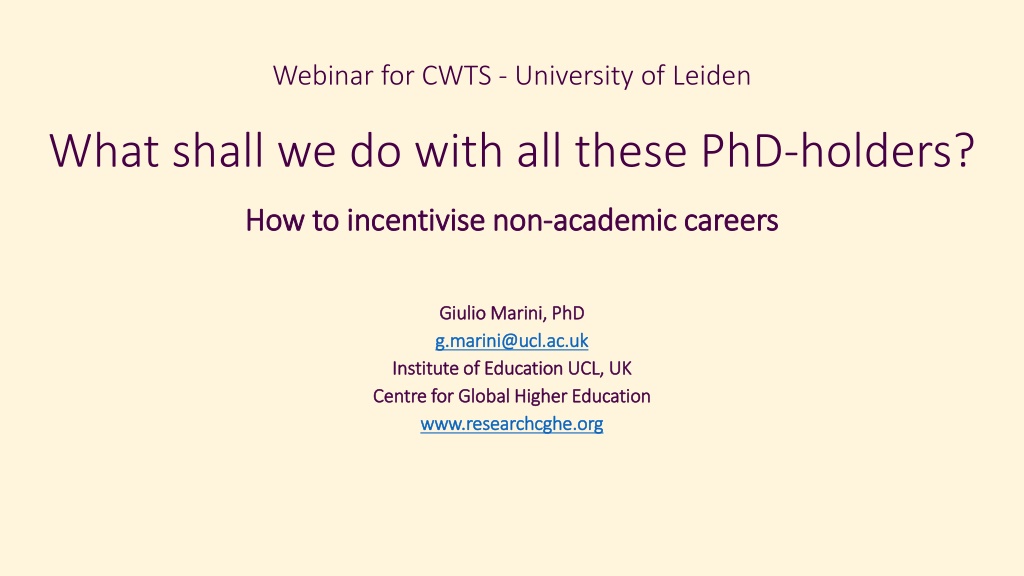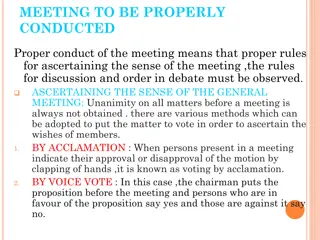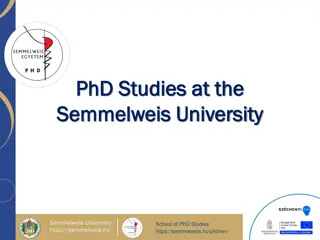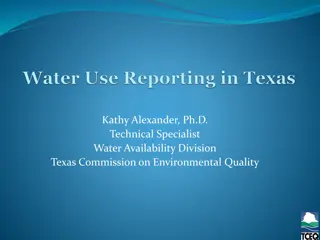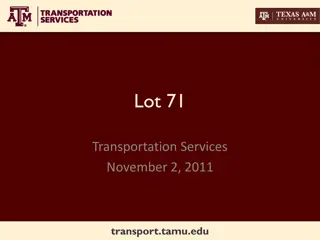What shall we do with all these PhD-holders?
Delve into strategies for incentivizing non-academic career transitions for PhD holders, exploring factors influencing academia exit decisions, publication types, post-doctoral value, and funding impact on social capital patterns.
Download Presentation

Please find below an Image/Link to download the presentation.
The content on the website is provided AS IS for your information and personal use only. It may not be sold, licensed, or shared on other websites without obtaining consent from the author.If you encounter any issues during the download, it is possible that the publisher has removed the file from their server.
You are allowed to download the files provided on this website for personal or commercial use, subject to the condition that they are used lawfully. All files are the property of their respective owners.
The content on the website is provided AS IS for your information and personal use only. It may not be sold, licensed, or shared on other websites without obtaining consent from the author.
E N D
Presentation Transcript
Webinar for CWTS - University of Leiden What shall we do with all these PhD-holders? How to incentivise non How to incentivise non- -academic careers academic careers Giulio Marini, PhD Giulio Marini, PhD g.marini@ucl.ac.uk g.marini@ucl.ac.uk Institute of Education UCL, UK Institute of Education UCL, UK Centre for Global Higher Education Centre for Global Higher Education www.researchcghe.org www.researchcghe.org
Topic & relevance Universities award too many doctoral degrees if we assume PhD-holders destination is mostly academic jobs What do we know about incentivising exit from academia? When is it optimal to leave academia (are post-doc positions valuable?) Type of publications and other activities (patenting, collaborations, etc.) Training during and after doctoral studentship (eg transferable skills; impact , non- academic media, etc.) Funding agencies (during and after PhD studentship) as a gateway to different social capital patterns
Hypotheses What does favour exit from academic jobs, especially non-education ones? Other education pathways are usually lazy options Other sectors might maximize externalities for economy and/or society at a large What does predict higher income? Underemployment is arguably a consistent risk in Italian labour market
Data & Analysis ISTAT PhD-holders labour market Two comparisons for Hp1: Academic vs. other education Academic vs. any non education sector Multilevel Logit regressions to take into account disciplinary fields Accounting for multicollinearity (VIF tests) Post-estimation analyses to check endogeneity by main chronological steps in career (see Annex for full) Doctoral funding possibly determining post-doctoral funding Doctoral funding possibly determining self-employment or starting-up one s activity Post-doctoral funding possibly determining self-employment or starting-up one s activity
Variables: main timeline by information During PhD studentship After PhD attainment (post-docs and others) Current situation Funding Scientific Productivity Positions Sector Job Channel PhD & JD (requirements) Income
M1 p M2 p Prediction of sector of employment. Model 1: Other educational sector against Higher education and Public Scientific Institutes. Model 2: not-academic and not other education against Higher education and public scientific institutes. *p<0.05, **p<0.01, ***p<0.001 age2 ln_senior age^2 -0.0002 -0.0002 Seniority in employment (ln of years) education mother (five modes) education father (five modes) graduation mark Sex (1 man; 2 woman) child/children funding of PhD: other public [BASE] funding of PhD: private organization funding of PhD: international organization funding of PhD: Nil no stipend mobility during PhD Teaching during PhD Duration of PhD employment at end of PhD -0.0775 -0.0885 0.0567 0.2171 * 0.1969 -0.1507 0.4406 *** 0.0383 -0.0527 0.0572 -0.1555 * 0.0320 d5_10 d5_5 d1_7 d0_1 d5_4 2.d1_10 3.d1_10 4.d1_10 5.d1_10 Mob_dur d1_14 d1_15 d2_52 Ln_prod -0.2774 -0.1028 0.1550 -0.0731 -0.0383 0.0529 0.2120 0.0423 0.0992 0.6136 * -0.1053 0.1894 -0.0379 -0.2727 ** Scientific production (ln) 0.1038 -0.1501 *** d2_46h Scientific production: patents -0.3820 *** -0.5544 *** d2_47a Funding players in postdoc: university -0.6170 ** 0.1400 *** d2_47b --- public research institutes ----private research organizations -0.4689 *** 0.0153 -0.4976 *** -0.0931 d2_47c d2_47d ----research consortia ----companies ----international organizations finished a post-doc R&D intensity of first job R&D intensity of job in 2011 Mobility after PhD Self-employment 0.1773 -0.2154 0.0505 -0.2168 -0.0251 -0.0610 -0.1882 -0.0812 0.4324 *** 0.0212 0.1094 0.1369 -0.0847 0.1634 -0.0674 0.1442 d2_47e d2_47f expostdoc d2_57a d2_64a Mob_post Self-empl. d2_39 PhD essential criteria for current job 1.6111 2.9027 *** d2_40 PhD essential for current job 1.2859 *** 1.3213 *** d2_44 Currently doing R&D job Having moved abroad 1.5993 *** 1.1577 *** d2_24 1.8418 *** -0.5638 0.1862 (0.1019) 0.2638 (0.1184) 5169 0.6222 *** 0.5209 * 0.1526 (0.0444) 0.0057 (0.0159) 8272 _cons var(_cons[d0_10]) var(_cons[d0_10>d0_5]) N
Model2 endogeneity Doctoral funding Post-Doctoral funding Self-employment
ln_WPPP p Table 3. Prediction of income per unit of working time. Multilevel regressions by sector of employment (as per Hp1) and disciplinary field of PhD attainment with test of endogeneity. *p<0.05, **p<0.01, ***p<0.001 lnsenior age2 d5_10 d5_5 d1_7 d0_1 d5_4 1.d1_10 2.d1_10 3.d1_10 4.d1_10 5.d1_10 Mob_dur d1_14 d1_15 d2_52 Ln_prod d2_46h d2_47a d2_47b d2_47c d2_47d d2_47e d2_47f expostdoc d2_57a d2_64a Mob_post Self-empl. d2_39 d2_40 d2_44 _cons N Seniority in employment (ln of years) age^2 education mother (five modes) education father (five modes) graduation mark Sex (1 man; 2 woman) child/children funding of PhD: MIUR national funding (base) funding of PhD: other public funding of PhD: private organization funding of PhD: international organization funding of PhD: Nil no stipend mobility during PhD Teaching during PhD duration of PhD (1: within 4 years) employment at end of PhD Scientific production Scientific production: patents Funding players in postdoc: university --- public research institutes ----private research organizations ----research consortia ----companies ----international organizations finished a post-doc R&D intensity of first job R&D intensity of job in 2011 Mobility after PhD Self-employment PhD essential criteria for current job PhD essential for current job Currently doing R&D job 0.014 0.000 ** 0.003 0.004 0.012 -0.014 -0.079 *** -0.052 -0.009 0.002 0.006 -0.013 0.008 0.013 0.001 -0.014 ** 0.025 ** -0.038 *** 0.009 -0.002 -0.017 0.032 ** 0.016 -0.029 0.028 0.000 0.076 *** 1.229 *** -0.040 ** 0.015 -0.019 3.968 *** 7035
Hp2 endogeneity Post Doctoral funding: any Self-employment Post-Doctoral funding: companies vel international organizations
Findings / implications It is important to devise smooth pathways towards possible non-academic destinations (especially non-education ones): Specific Post-doctoral programs/stakeholders are relevant Non-academic/ non-unfettered funding agencies are good for the purpose of opening PhD-holders (and universities) to external private/public/other sectors world (and vice versa). Not necessarily at doctoral level. PhD-holders need their space & time for their reflection during studentship, for later on they may discover other opportunities. The road to self-employment is gradual. Caution ought to be paid about self-employment because it could be an Italian labour market pattern
Annex. Tests of endogeneity checking chronological determinants in career steps *p<0.05, **p<0.01, ***p<0.001 Hp Hp1 Hp1 Hp1 Hp1 Hp1 #test Dep variable 1 Academic vs. other Education 2 Academic vs. other Education 3 Academic vs. other Education 4 Academic vs. other Education 5 Academic vs. Other Sectors Endogenous variable Self-employment Self-employment Postdoc funding: company or intern. Org. Postdoc funding: company or intern. Org. Self-employment Instrumental variables fund_PhD (stipend/no-stipend) What funding at doctoral level (d1_10) fund_PhD (stipend/no-stipend) What funding at doctoral level (d1_10) fund_PhD (stipend/no-stipend) Output Hp1 Hp1 Hp1 Hp2 Hp2 Hp2 Hp2 Hp2 Hp2 6 Academic vs. Other Sectors 7 Academic vs. Other Sectors 8 Academic vs. Other Sectors 9 Wage per unit of time (ln) 10 Wage per unit of time (ln) 11 Wage per unit of time (ln) 12 Wage per unit of time (ln) 13 Wage per unit of time (ln) 14 Wage per unit of time (ln) Self-employment Postdoc funding: company or intern. Org. Postdoc funding: company or intern. Org. Self-employment Self-employment Self-employment Self-employment Postdoc funding: company or intern. Org. Postdoc funding: company or intern. Org. What funding at doctoral level (d1_10) fund_PhD (stipend/no-stipend) What funding at doctoral level (d1_10) fund_PhD (stipend/no-stipend) What funding at doctoral level (d1_10) Postdoc funding: company or intern. Org. Postdoc funding: any fund_PhD (stipend/no-stipend) What funding at doctoral level (d1_10) *** *** *** ***
Questions most welcome! Giulio Marini, PhD g.marini@ucl.ac.uk
